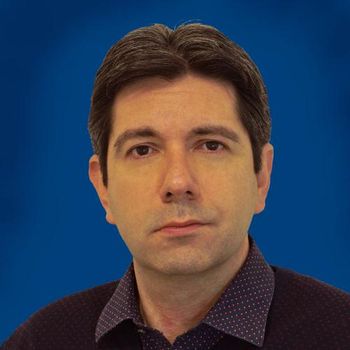
Claire Glynn Discusses Innovations in Forensic Science Technology
In this video interview clip, Claire Glynn highlights the advancements in portable DNA analysis, emphasizing its current role rather than future potential in forensic science.
Last month, the American Academy of Forensic Sciences (AAFS) held their Annual Scientific Meeting in the Baltimore Convention Center, in Baltimore, Maryland. Throughout the week, numerous talks focused on the technological innovations that are ongoing in forensic science, and how these developments may influence how investigations are conducted.
Previously, we spoke with three subject matter experts in forensics: Tom Metz, a Laboratory Fellow and Chief Science Officer of the Biological Sciences Division at Pacific Northwest National Laboratory; Heidi Eldridge, a Certified Latent Print Examiner and the Director of Crime Scene Investigations at George Washington University; and Claire Glynn, a professor of forensic science and director of the Graduate Certificate in Forensic Genetic Genealogy, all of whom provided an overview of their sessions at AAFS and what it was like to be on the ground at the conference (1).
In this video interview clip, Glynn highlights the advancements in portable DNA analysis, emphasizing its current role rather than future potential in forensic science. Rapid DNA technology has been deployed to disaster sitesproviding results within 48 hours, a significant improvement over the normal wait time for DNA analysis which can often reach up to several months. Over the past decade, portable DNA instruments have evolved from crude to sophisticated, now processing multiple samples quickly, reducing analysis time from hours to minutes. This technology is seen as a key development in the future of forensic DNA analysis.
Glynn is a forensic scientist and educator specializing in forensic genetic genealogy (FGG) who currently works at the University of New Haven, where she has been since 2014. She previously worked at Eurofins Forensic Services in the UK, focusing on forensic biology for homicide and sexual assault cases (2). She earned her Ph.D. in breast cancer research, developing novel biomarkers for diagnosis and treatment, and now applies molecular profiling to forensic science (2). Her research explores FGG applications, degraded samples, Rapid DNA, RNA analysis, and DNA methylation markers (2). Glynn also serves as a consultant to law enforcement globally and has received multiple awards, including Connecticut Magazine’s “40 Under 40” in 2022 (2).
This interview segment is part of our ongoing coverage of the AAFS Conference. To view all our recap coverage of AAFS, click
References
- Wetzel, W. What You Missed at AAFS. Spectroscopy. Available at:
https://www.spectroscopyonline.com/view/what-you-missed-at-aafs-2025 (accessed 2025-03-18). - University of New Haven, Claire L. Glynn, Ph.D. University of New Haven. Available at:
https://www.newhaven.edu/faculty-staff-profiles/claire-glynn.php (accessed 2025-03-18).
Newsletter
Get essential updates on the latest spectroscopy technologies, regulatory standards, and best practices—subscribe today to Spectroscopy.





